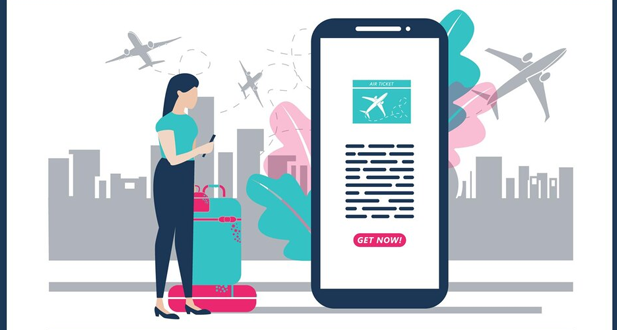YES, YOU SHOULD! HERE’S WHY
Email marketing is a powerful and cost-effective strategy for travel brands to engage with clients, nurture leads, and drive conversions. While maintaining a blog can be resource-intensive, email marketing offers a direct and personalized approach to connect with travelers at various stages of their journey.
### Benefits of Email Marketing for Travel Brands:
1. **Cost-Effective Communication**: Email marketing is one of the most affordable marketing channels available. It allows travel agencies to reach a targeted audience with personalized messages without the high costs associated with traditional advertising.
2. **Effective Lead Generation**: According to statistics, 87% of marketers consider email marketing to be one of the most effective channels for lead generation. By capturing email addresses through website sign-ups, bookings, or inquiries, travel agencies can nurture these leads with relevant content and offers.
3. **Personalized Customer Engagement**: Personalization is key to successful email marketing in the travel industry. Each traveler has unique preferences, interests, and travel habits. By segmenting your email list based on demographic data, travel history, interests, or behavior, you can tailor your messages to resonate with each segment.
4. **Automated Updates and Notifications**: Email automation allows travel agencies to send timely updates, booking confirmations, itinerary details, and travel tips automatically. This enhances customer experience by keeping travelers informed throughout their journey without manual intervention.
5. **Customer Retention and Loyalty**: Email marketing enables travel brands to stay top-of-mind with past customers, encouraging repeat bookings and fostering brand loyalty. By sending personalized offers, exclusive deals, and relevant travel content, agencies can nurture long-term relationships with their audience.
### Implementing Segmentation for Personalization:
Segmentation is the foundation of effective personalization in email marketing for travel brands. Here’s how segmentation can enhance your email campaigns:
– **Demographic Segmentation**: Divide your audience based on age, gender, location, or income level to tailor content that resonates with specific demographics.
– **Behavioral Segmentation**: Analyze customer behavior such as past bookings, travel preferences, engagement with previous emails, and website interactions. Use this data to send targeted recommendations or personalized offers.
– **Interest-Based Segmentation**: Segment subscribers based on their interests and travel preferences (e.g., beach vacations, adventure travel, family trips). Send relevant content and destination guides that appeal to each interest group.
– **Lifecycle Stage Segmentation**: Tailor your messages based on where subscribers are in their travel planning journey—whether they’re researching destinations, comparing prices, or ready to book.
The travel industry, as one of the largest sectors globally, has faced challenges due to the pandemic but is showing signs of recovery. As economic conditions improve and people adjust to the new normal, the tourism sector is projected to generate significant revenue this year, albeit below pre-pandemic levels.
Why Email Marketing?
Email marketing remains a cornerstone of digital marketing strategies for travel companies due to its effectiveness in driving engagement, nurturing leads, and fostering customer loyalty. Here’s why it’s crucial:
- Direct Communication: Email provides a direct line of communication to travelers, allowing you to deliver personalized messages, updates, and promotional offers.
- Cost-Effective: Compared to traditional advertising, email marketing is cost-effective and offers a high return on investment (ROI), making it accessible even for smaller travel businesses.
- Segmentation and Personalization: By segmenting your email list based on demographics, behavior, and interests, you can tailor content that resonates with different audience segments, thereby improving engagement and conversion rates.
- Automation: Email automation allows you to streamline workflows, send timely messages (like booking confirmations, travel tips, and post-trip follow-ups), and nurture leads without manual intervention.
Effective Travel Email Marketing Strategies
To maximize the impact of your email campaigns in the travel industry, consider implementing these strategies:
- Segmentation and Personalization:
- Behavioral Segmentation: Segment subscribers based on their travel history, booking preferences, and engagement with previous emails.
- Demographic Segmentation: Tailor content based on age, location, travel interests, and past interactions.
- Lifecycle Stage: Send targeted messages at different stages of the travel planning journey (e.g., inspiration, research, booking).
- Promotional Offers and Deals:
- Exclusive Discounts: Offer special promotions, early booking discounts, or limited-time offers to incentivize bookings.
- Flash Sales and Last-Minute Deals: Create urgency with time-sensitive offers that prompt immediate action.
- Content Marketing:
- Destination Guides and Travel Tips: Provide valuable content that helps travelers plan their trips, such as destination guides, travel tips, packing lists, and local insights.
- Customer Stories and Testimonials: Share authentic stories and testimonials from satisfied customers to build trust and inspire travel.
- User-Generated Content (UGC):
- Social Proof: Showcase UGC like travel photos, reviews, and experiences shared by customers on social media or review platforms.
- Contests and Challenges: Encourage subscribers to share their travel experiences for a chance to be featured in your emails or win prizes.
- Responsive Design and Mobile Optimization:
- Ensure your emails are mobile-friendly and optimized for different devices. Many travelers use smartphones and tablets to access travel information and make bookings.
- Engagement and Re-engagement Campaigns:
- Welcome Series: Onboard new subscribers with a series of welcome emails introducing your brand, services, and highlighting key benefits.
- Re-engagement Campaigns: Win back inactive subscribers with personalized offers or content that reignites their interest in your travel services.
- Measurement and Optimization:
- Track key metrics like open rates, click-through rates, conversion rates, and revenue generated from email campaigns.
- Use A/B testing to optimize subject lines, content, and calls to action (CTAs) for better performance.
WHEN SHOULD YOU START CREATING BLOG CONTENT?
- When comparing blogging to email marketing, there is no “winner,” as stated at the beginning of this article. You have the ability to create a large amount of content. Long-form, informational content is appealing to your target audience.
- You are skilled at creating content that engages the reader, emotionally connects with them, and transports them away from the present moment. As part of your SEO strategy, you are focusing on long-tail keyword phrases.
- To attract more visitors to your website, you need to do some marketing. You want to position your brand in your sector as a thought leader or a reliable information source.
WHEN IS THE BEST TIME TO CREATE EMAIL CONTENT?
- Some factors suggest that creating email content such as a newsletter or a regular “roundup” is the best approach. Because you have limited content writing resources, creating short email newsletters is more manageable.
- You have a tight budget for developing your marketing strategy. You have a talent for creating short, engaging pieces of content.
- You want to foster a sense of “community” among your customers and strengthen your relationships with them. You already have a lot of content that you can share on your website. You’re looking for new ways to move more prospective customers through the buyer funnel.
THE BEST APPROACH
If you’re a new brand developing a marketing strategy, think about the conditions listed above and decide where you want to focus your efforts based on your objectives and capacity.
As this post has demonstrated, both Email marketing and blog content creation have advantages. Both are incredibly effective methods for travel companies to establish a recognizable brand image and engage their audience.
Instead of picking a winner between the two, consider the value that each of these formats has to today’s consumers and tailor your offering accordingly to achieve the best results.
Top Email Marketing Strategies for Travel and Tourism to Drive Growth
- Creating Unique Emails:
While designing emails, look for creative ideas.
All it takes is an eye-catching visual to make a difference. Travel Hacker emails demonstrate the best way for a marketer to combine all of the popular destinations into one email. They also separated it into “wallet-friendly,” “top beach,” and “top new year destinations.”
This would meet the needs of all travelers.
- Creating an Email List:
A good email list can make your life easier. If you are restarting your process after a long break, it is time to create a new email list. Adopt various techniques, such as including a pop-up on the website, creating more landing pages, and including the appropriate CTA, among others.
- Including Enchanting Videos:
Before deciding on a destination, 66% of travelers watch videos. You should not be surprised by the statistics! So why shouldn’t they?
After all, leisure travelers seek out unique and memorable experiences. Be it the serene beauty of the authentic scrumptious food of a distant land. They want a quick escape to recharge their batteries. So, as a marketer, if you include videos that catch their attention, it will be a win-win situation for both of you.
Email marketing software like Send X makes it simple to embed videos in emails. The step-by-step guide assists users in sending the best videos to the recipients.
- Automation of Email:
Automated emails may make the job of marketers in this industry easier. They feel good when you send an instant email to them. They begin to trust your service and eagerly anticipate your next email.
For example, after a customer books a trip to a specific location, you can send a follow-up email in 14 days, 7 days, and so on. You can also share useful information such as the best local attractions and hotels. This could help the customer connect with your brand. You can experiment with various innovative techniques while designing the email and then automate it.
- Customize Your Email Campaign:
Personalization would never go out of style. Put yourself in the shoes of the customer and think like a traveler. Would you open an email if the destination didn’t match your preferences?
For example, you dislike places where the weather is hot and humid, but the marketer sends you to tropical countries. It simply would not work! Every email marketer in the travel industry should research their customers’ preferences before reaching out to them; otherwise, their efforts will be futile.
- Inquiring About the Experience:
As competition heats up, businesses should differentiate themselves by emailing their customers to inquire about their experiences. The process vastly improves the customer relationship.
Airbnb, the American vacation rental marketplace, provides a unique tourism experience, and the company discovered that by using this strategy, it could better understand its customers.
Customers were free to express their opinions. It was discovered that the brand received a lot of positive feedback.
- Insightful User-Generated Content:
As the open rate rises, user-generated content is gradually becoming the lifeblood of marketing. Customers are more willing to see their fellow travelers’ experiences. The primary reason is that they value authentic content over promotional content from brands.
Every marketer should investigate this and create content that is relevant to the recipient’s interests.
- Demographic Profiling:
In an email strategy, segmenting the audience based on preferences and interests is common, but have you tried segmenting based on demographics?
Yes, demographic segmentation of the audience is effective. While sending, demographics such as age group should be considered because young people prefer more adventurous places than elderly people.
- Delivering All Information at Once:
Most recipients do not have time to read the entire email. In such cases, if you collect and collage all of the information into a single design, they will find it exciting. This example demonstrates how to include all relevant elements in the email content. You can find information about accommodations, destinations, dining, and activities in a single email.
Don’t you think it would motivate the customer to take the appropriate action?
- Thank you email:
Thanking your customers implies that you place a high value on them. That is a sensation that every customer enjoys. They are drawn to your brand. So, never forget to thank them.
In this example, the travel company greets and thanks the customer with the phrase “we are happy to have you part”.
- Subject Lines:
The hero of the entire email content is a great subject line. It summarises the whole email in a single glance. “50% off in the castaways from…,” “stylish stays at your favorite locations,” and “pick an island, any island” are some of the best email subject lines.
Discounts in the subject line would appeal to all customers. Furthermore, statements like “stylish stays…” imply that the customer will have a comfortable stay at their preferred location. With some of the best subject lines, Secret Escapes, Thomas Cook, and the Expedia team demonstrate how to attract customers. Include subject lines that will entice the traveler.
- Newsletters as a Campaign Driver:
Sending newsletters at regular intervals could be beneficial. improve your email marketing campaign These email campaigns nurture the customer and keep your brand at the forefront of their minds.
You can create the best newsletter by including eye-catching images of the countryside or cities. Crystal Cruise, an American cruise line, created the newsletter for its luxury travel customers.
It showed tourists enjoying the services and having a good time away from the hustle and bustle of city life. Provide a rich travel experience to customers – tourism email marketing. Aside from that, the brand included content that conveys more information about their service.




